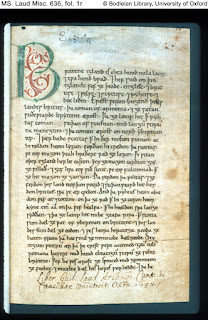Giorgio Vasari (1511-1574), artist and famous for his work on the lives of artists, once wrote:
Then arose new architects who after the manner of their barbarous nations erected buildings in that style which we call Gothic.
 |
| Gothic Cathedral of Chartres |
The ancient Greek and Roman architecture answered all the perfections required in a faultless and accomplished building ... [but Goths] ... introduced in their stead a certain fantastical and licentious manner of building, which we have since call'd Modern (or Gothic rather) congestions of heavy, dark, melancholy, monkish piles, without any just proportion, use or beauty, compar'd with the truly Antient. [A Parallel of the Ancient Architecture with the Modern, 1664]Because the Goths had conquered Rome, they and their cousins the Vandals (whose name became a noun we still use) were reviled by those who revered Classical Greco-Roman culture and art. Later generations (like Vasari's and Evelyn's) used "Gothic" as pejorative. For modern art historians, however, Gothic architecture is less "barbarous" than the earlier style which we call "Romanesque."
 |
| Romanesque Cathedral, Lisbon |
Gothic architecture was an evolutionary change created by the adoption of a few simple techniques. The pointed arch transferred the weight of the stonework down the sides of the framework, rather than pushing the supports outward. This allowed walls to be thinner. External supports called "flying buttresses" supported the walls and roof further, allowing larger windows. Both features let the architects build upward, making towers and roofs that swept heavenward. The larger windows brought more light inside, which was seen as a way to glorify God's splendor. This is all considered an improvement in sophistication—to those of us not living in the 17th century, that is.
Any historical Goths shown a picture of Gothic architecture would not understand why it was named after their culture. The use of the term "Gothic" gets even more removed from reality, however, a generation after John Evelyn spoke so vehemently against the style.
[to be continued]




























